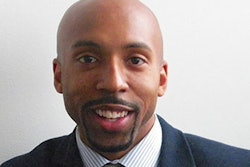The year is 1995. Governmental bodies and institutions receiving federal funding are mandated by the 1990 Native American Graves Protection and Repatriation Act (NAGPRA) to complete inventories of their collections of Native American remains and cultural items. But nearly three decades later, that inventory work is unfinished along with repatriation efforts for such remains and artifacts, according to multiple Native American experts and report findings.
 James C. Ramos
James C. Ramos
In response to these ongoing shortcomings, lawmakers have proposed and passed legislation to help move the process along, this time keeping a closer eye on the institutions in question.
"Those are people. Those are loved ones of our people that need to go back into the ground,” says California Assemblymember James C. Ramos, author of two bills signed by California Gov. Gavin Newsom in October in pursuit of hastening the pace of repatriations from the state’s schools. “California Indian people have suffered through different colonialism eras. Don't we owe it now, in the year 2023, to get those remains back to the rightful people for proper reburial, no longer holding them as trophy cases but putting them back into the ground where proper respect needs to be done?"
Incomplete, inadequate
“Since the passage of NAGPRA in 1990, less than half of the Native American ancestral remains in collections have been repatriated to their traditional caretakers. Over 117,576 Native American individuals are still in museum and federal agency collections, and 94% of those have not been culturally affiliated with any present-day Indian Tribe or Native Hawaiian organization,” notes Joy Beasley in a 2022 statement before the U.S. Senate Committee on Indian Affairs. Beasley is associate director of cultural resources, partnerships, and science for the National Park Service (NPS).
These stark shortcomings – in the face of NAGPRA and California’s 2001 CalNAGPRA – have been the topic of more than one state audit and report in recent years.
In 2020, the California State Auditor’s office reported that the University of California was not in compliance with NAGPRA and CalNAGPRA, stating that the university system had “inadequate policies and oversight” and lacked tribal representation on campus and systemwide committees, leading to “inconsistent practices” for repatriation. The state agency had examined progress at UC Berkeley, UC Davis, and UCLA and found large disparities. UCLA, for instance, “repatriated nearly all of the remains and artifacts from its collection,” but for UC Berkeley, it was “only about 20%.”
Another audit in 2022 – this time looking at UC Berkeley, UC Riverside, UC Santa Barbara, and UC San Diego – found that advancements had been made, but not nearly enough. Though UC adopted recommendations the auditor’s office made in 2020, the agency reported a lack of prioritization on the part of the UC President’s Office in returning remains and items. The failings described included insufficient guidance, funding, tribal consultations, deadlines, and full-time repatriation coordinators.
 Dr. Rose Soza War Soldier
Dr. Rose Soza War Soldier
The 2022 report stated “[that the audited UC campuses] continue to maintain large collections and that some have yet to completely review all the remains and cultural items in their control.” It projected that the UC system was “unlikely to fully repatriate campus collections for at least another decade.”
A separate 2023 audit into California State University (CSU)’s collections and repatriation efforts – including a survey of all 23 CSU campuses – found that more than half of the 21 campuses with applicable collections had not repatriated any remains or cultural items to tribes, with 12 of the 21 not having finished reviewing their collections. In total, the report calculated that the CSU system overall had only repatriated 6% of its collections – the estimated total CSU collection size is 698,200.
The biggest offender, as indicated by the report, was Sonoma State University, with an estimated collection of 185,300 Native American remains and items, although the school’s review was not yet complete at the time of the audit. The report detailed similar shortcomings in the CSU system, such as lack of funding and staffing in addition to an inconsistent patchwork of policies.
"I think that there has ultimately been a lack of priority and a lack of really seeking to actually be compliant with both federal law and state law,” says Soza War Soldier, an enrolled member of Soboba Band of Luiseño Indians. “This has ultimately led to a cultivation of really poor relationships and is overall harming all tribal people. Because they don't think that what any of the legislation proposes is really a big ask."
The degree of repatriation of Native American remains and items from higher ed in general has varied, says Dr. K. Tsianina Lomawaima, a retired Indigenous studies professor of Mvskoke/Creek Nation descent.
“I think they have been handicapped because their museums and collections are often very, very far down university administrators' [priorities],” says Lomawaima.“So, there's not been the investment of staff and resources that it takes to follow those NAGPRA procedures."
UC Berkeley is now in active consultation with tribes affiliated with most sites in California (76%), says Dr. Sabrina C. Agarwal, chair of the UC Berkeley anthropology department and member of the school’s NAGPRA Implementation Committee.
Since July 2020, the school has repatriated or transferred control of approximately 1,000 ancestors, 53,000 associated or unassociated funerary objects, and 1,690 objects of cultural patrimony, says Agarwal.
“All of our NAGPRA-eligible ancestors are available for repatriation,” Agarwal writes in an email to Diverse. “However, consultation is required with Tribes to determine the affiliation, particularly with federally unrecognized tribes for which the largest portion of remaining holdings belong to. Ohlone ancestors account for approximately 45% of Native American ancestors housed at UC Berkeley.”
Given the scale of all the work, the original five-year NAGPRA deadline of 1995 may have been too optimistic, Lomawaima says.
“But it's way past that now," she says.
A complex path ahead
In addition to the myriad factors that have contributed to the slow pace at which campuses are seemingly progressing, other hurdles arise when it comes to repatriation.
The 2022 auditor’s report mentions how experts from tribal communities have to take time off work for consultations at California’s schools and how these communities may have limited capacity to respond to multiple consultation requests.
"Depending on where they are located at, it can be a distance for them to make the trek to an institution to even evaluate the collections,” says Soza War Soldier. “There is also the potential that they may not necessarily have a land-base that is appropriate for them to bury once ancestors are repatriated.”
Simple returns are not necessarily the same as repatriations either. In the cases of Chico State and CSU Monterey Bay, the two schools returned remains from their collections to tribes without following formal federal guidelines.
“There is also very much the idea that, in many instances, a lot of tribal people want as limited handling of the ancestors as possible,” says Soza War Soldier. “They would prefer not to have piecemeal processes. We don't want a collection of 10 baskets and a collection of a femur bone, and then later on, the remaining skeletal remains. We want everything."
Differences in protocol among the nation’s various Native American tribes add yet another layer of complexity to repatriation efforts, says Dr. Farina King, the Horizon Endowed Chair of Native American Ecology and Culture at The University of Oklahoma and a citizen of the Navajo Nation.
"There's the question, too, of some Native nations. Do they want those back? There’s different protocol and traditions. Do they have the resources or the means to preserve them?” King says. “You’re talking about hundreds of nations and communities. It is complicated. We have all these different protocols. So, it's also a matter of how to support, recognize, and work with that specific people, their needs. When we still live in a world that homogenizes Native Americans in so many ways, I think it's very messy."
Funds toward tribal communities may be in order as well, says Dr. Ashley Cordes, an assistant professor of Indigenous studies at the University of Oregon.
“Beyond repatriation, there should be stronger structures for financial compensation for Tribal citizens to account for reburial of ancestors and belongings in culturally appropriate places, hold ceremonies for their ancestors and belongings, and afford Tribal citizens the opportunity for mental health services they may want to process all of it,” says Cordes, an enrolled citizen of the Kōkwel/Coquille Nation. “Tribes need additional access to funding to house the belongings and to purchase technologies, such as climate-controlled repositories.”
Legislative action
Through his bills, AB 226 and AB 389, Ramos seeks to prevent discontinuation of repatriation.
AB 226 implements two more state audits from the UC system, one in 2024 and the other in 2026. It also urges UC leadership to: provide more funding; ban the use of Native American remains and cultural remains for teaching and research; and give annual reports on campus progress toward full repatriation to the Assembly Higher Education Committee, starting in June 2024.
Meanwhile, AB 389, which has to do with the CSU schools, mandates that the university system follow state auditor recommendations for repatriation, including: that several campuses hire full-time, experienced repatriation coordinators; that CSU implement standardized policies and protocols for the handling of remains and items, training, and repatriation; and that campuses finish collection review efforts by Dec. 31, 2025.
"AB389 is a call, making sure that they're taking the repatriation of these remains seriously by implementing it from the top down, from the chancellor's position down to the local universities, making sure that they take it as a priority since it was supposed to be done since 1995,” Ramos says. “[It] also touches on the handling of Native American remains in the classroom and the institutions."
There is a distinct lack of respect and understanding of the importance of these remains to California's First People, says Ramos, the first and only California Native American elected to the state legislature.
The outcomes of NAGPRA and CalNAGPRA have proven that deadlines can indeed be missed, and efforts slowed. But with Ramos in the state assembly, the goal is for that not to happen again.
“What has not happened before is the focus of the state legislature,” Ramos says. “With myself now being in the state legislature, we will have hearings to find out the progress towards it. This is going to be following the progress and having a series of hearings on it because now we have a voice in the state legislature.
“It's not going to go another 20-something years without any insight or oversight from it.”















